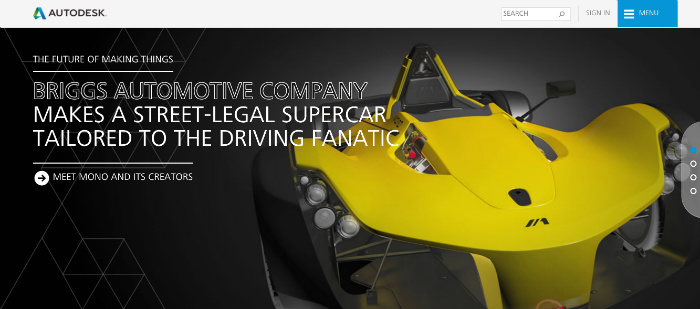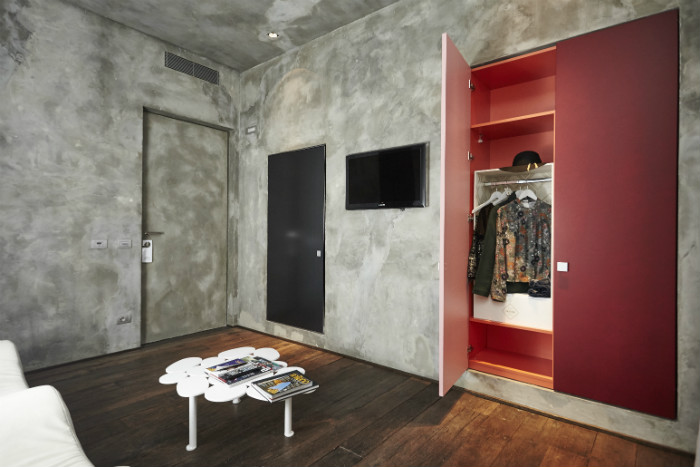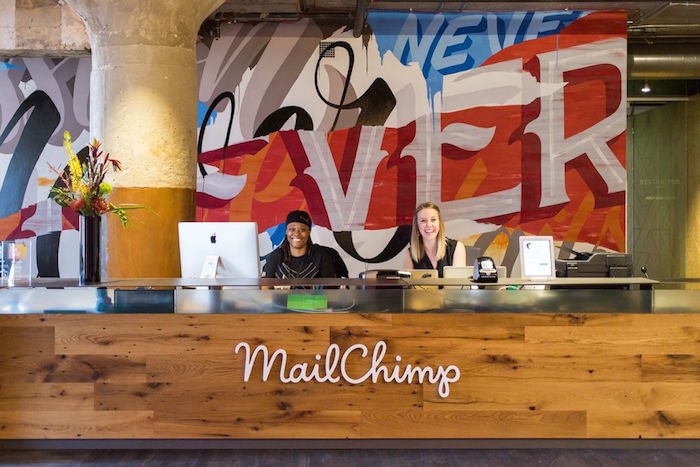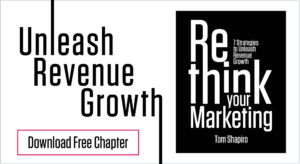Hot Branding Trends in 2016
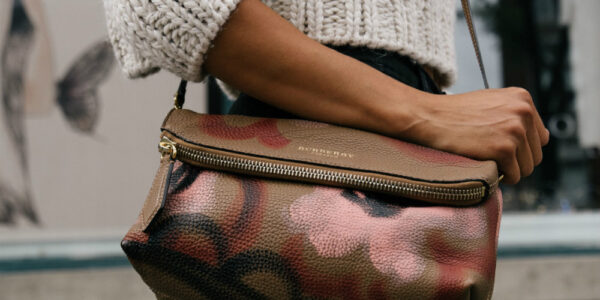
Experience! Engagement! Authenticity!
Branding is going through nothing less than a revolution, and expectations of consumers and B2B buyers alike are going through the roof. People want to understand what your brand stands for. They want to have a relationship. Visual branding and messaging continue to be critical to a brand’s success, but the intangibles of the brand are more important than ever before and should permeate all that you do as a business.
 Want your fans to tattoo your logo on their bodies as Harley-Davidson’s do? Well, maybe that’s a bit insane, but to create true brand love in 2016, you’ll definitely want to check out our collection of the branding trends coming your way this year, as outlined below.
Want your fans to tattoo your logo on their bodies as Harley-Davidson’s do? Well, maybe that’s a bit insane, but to create true brand love in 2016, you’ll definitely want to check out our collection of the branding trends coming your way this year, as outlined below.
Customer Experience
In 2016 brands will be striving to connect more deeply with customers. The age of the customer is upon us, with their greater access to information and ever-increasing expectations. Deanna Laufer at Forrester writes, “In 2016, [customer experience] will be among the top 10 critical success factors determining who will win and who will fail in the age of the customer.”
Companies that want a competitive advantage in 2016 should focus on providing a better customer experience at every brand touchpoint through the customer journey. What this means is a brand will benefit by not only planning for the ideal experiences it wants its audience to have but also by building the ecosystems to nurture and support a full range of customer experiences.
The collaboration software company Slack is adding over $1 million in new contracts every 11 days. As Slack CMO Bill Macaitis says, “A lot of times in business it’s all about short-term leads. To me, brand is long-term leads. You can do a lot of things to juice your short-term revenue…, and you might get a short-term increase in those leads, but it’s going to be a really negative experience. To me, brand is all about the cumulative net experience, which is going to drive your long-term organic growth.”
Emotion-Driven Branding
In the book Brand Immortality: How Brands Can Live Long and Prosper, authors Hamish Pringle and Peter Field analyzed 1400 case studies of successful advertising campaigns contained in the dataBANK of the Institute of Practitioners in Advertising (IPA), and found that ad campaigns with purely emotional content almost doubled the performance of ads with only rational content (31% vs. 16% boost in profitability).
The neuroscientist Antonio Damasio found that it’s extremely difficult for people with damage to the part of the brain that triggers emotions to make decisions. In other words, without evoking an emotional response out of your target audience, it’s extremely difficult for your brand to lead your audience to make a purchase (or to register for a download, sign up for an event, fill out a form for more information, or any other conversion event).
Brands such as Apple and Nike have long known the power of connecting with their audiences on an emotional level. Emotions-based marketing is starting to catch fire, as witnessed by Autodesk’s The Future of Making Things campaign, Airbnb’s Wall & Chain campaign, Always’ #LikeAGirl campaign and many other examples across the marketing landscape. Smart brands will focus on emotions for meaningful positioning, differentiation and connection with their audiences, not just in 2016, but into the future.
Engagement Over Awareness
Individuals are currently bombarded with marketing messages. According to certain sources, people come into contact with anywhere from 3,000 to 5,000+ brand messages a day. The value of simply getting in front of a prospect has been diluted. With the pervasiveness of digital touchpoints, engagement is of much higher worth to a brand than higher-funnel metrics such as awareness.
Companies such as Lenovo are using their social media accounts as customer research platforms to spur greater engagement, uncovering their product requests and preferences, and turning the feedback into customer-driven product development.
Brands in 2016 will be thinking brand immersion more than brand reach, and for good reason.
Contextual Omnipresence
What’s the next stage of omnichannel? The website TrendWatching.com, which has more than 3,000 trend spotters in 90+ countries around the world, has identified “Contextual Omnipresence” as the new, evolved state of omnichannel marketing, and it’s a concept that smart brands will be adopting.
In recent years, brands have placed emphasis on being available in all channels in which their customers spend time. TrendWatching explains that instead of a brand focusing on how to acquire additional coverage in additional channels or new technology platforms, “smart brands will focus on answering a more meaningful equation: innovative channels + nuanced contexts = right place + right time.”
Instead of just being in more channels for the sake of being in more channels, brands should be there with a clear purpose and value. TrendWatching points to the example of Antwerp’s Hotel Banks and its “Mini Fashion Bar”, in which rooms are stocked with fashionable apparel and accessories from the French fashion brand Pimkie. Hotel guests can use the bar as they would the more traditional mini-bar, but with a fashion concierge available to answer style questions or get you that cool dress or jacket in a different size.
Packaging as an Extension of the Brand
Apple was early to understand the value of packaging as an extension of the brand, turning the unboxing experience into a delight. Similarly, opening a box of Beats by Dr. Dre earphones is just as delicious. It’s more than satisfying, it’s an experience. And even more than that, it’s a shareable experience. Smart brands are now planning how the customer can share the experience with others, whether through Instagram, Pinterest or Facebook.
Even something as mundane as a corporate annual report is an opportunity for on-brand packaging. The email marketing platform Mailchimp continually goes all out in the design of its annual report, making something that is typically stuffy and boring into something fun and exciting. And it’s not just the design. The packaging extends to the content in Mailchimp’s annual report, as well, whether showcasing office murals painted by employees or the guest speakers featured at their coffee hours.
Today’s individuals expect more from products and services, and they certainly expect the design and physical representation to be carefully thought through to communicate the essence of the brand while also enhancing the experience.
Authenticity
People today are not willing to put up with brand exaggerations. They want to know not only what your brand actually is, but the people behind the brand and what they stand for. Almost every product or service now becomes a commodity in the veritable blink of an eye. With options overflowing, consumers are looking for more than just a product or service. Often, they want something that brings meaning amid an ocean of commodities.
This can explain the rise of Michelle Phan as a popular choice for beauty and make-up advice, as evidenced by Phan’s 8.3 million YouTube subscribers. Look at the dramatic rise of Tom’s Shoes, or the popularity of Studio 189, or the innovation of Recyclebank, which rewards you with deals and discounts from local businesses when you do something to help bring about a waste-free future. According to the 2015 Cone Communications/Ebiquity Global CSR Study, 90% of consumers would switch brands to one associated with a good cause and 84% seek out responsible products whenever possible. Brands will need to show their true colors. Their audiences will demand it.
Simplicity
As we wrote in our post a few months back on logo design trends, there’s a strong return to simplicity in many new logo redesigns. Lenovo is a good example of this trend, taking an italic, difficult-to-read logo and transforming it into a logo system with a simpler look, yet with many more possibilities.
The containing frame of the new Lenovo logo “acts as a window into culture and the world that surrounds us, housing a range of images, colors and patterns.” David Roman, Lenovo’s Chief Marketing Officer, goes further in explaining that the box mirrors Lenovo’s new, innovative attitude, with just about anything able to fit in the box based on the context, whether different colors, materials, animation, video, etc.
And simplicity is not just limited to the logo. In a world of brand noise everywhere, the more immediately and easily you can enable your audience to understand your product or service, the better. Consider the clear packaging of Tylenol Care+, with large approachable labels such as “I have a Fever” and “I have a Cough”. Simple. Easy to understand. More in the spirit of how we actually talk, and that type of simplicity really works in branding.
Photo Credits: Burberry Bag: London Scout; Love Statue: Tristan Schmurr; Pimkie Mini Fashion Bar: This Marketers Life; MailChimp Mural: Jason Travis
